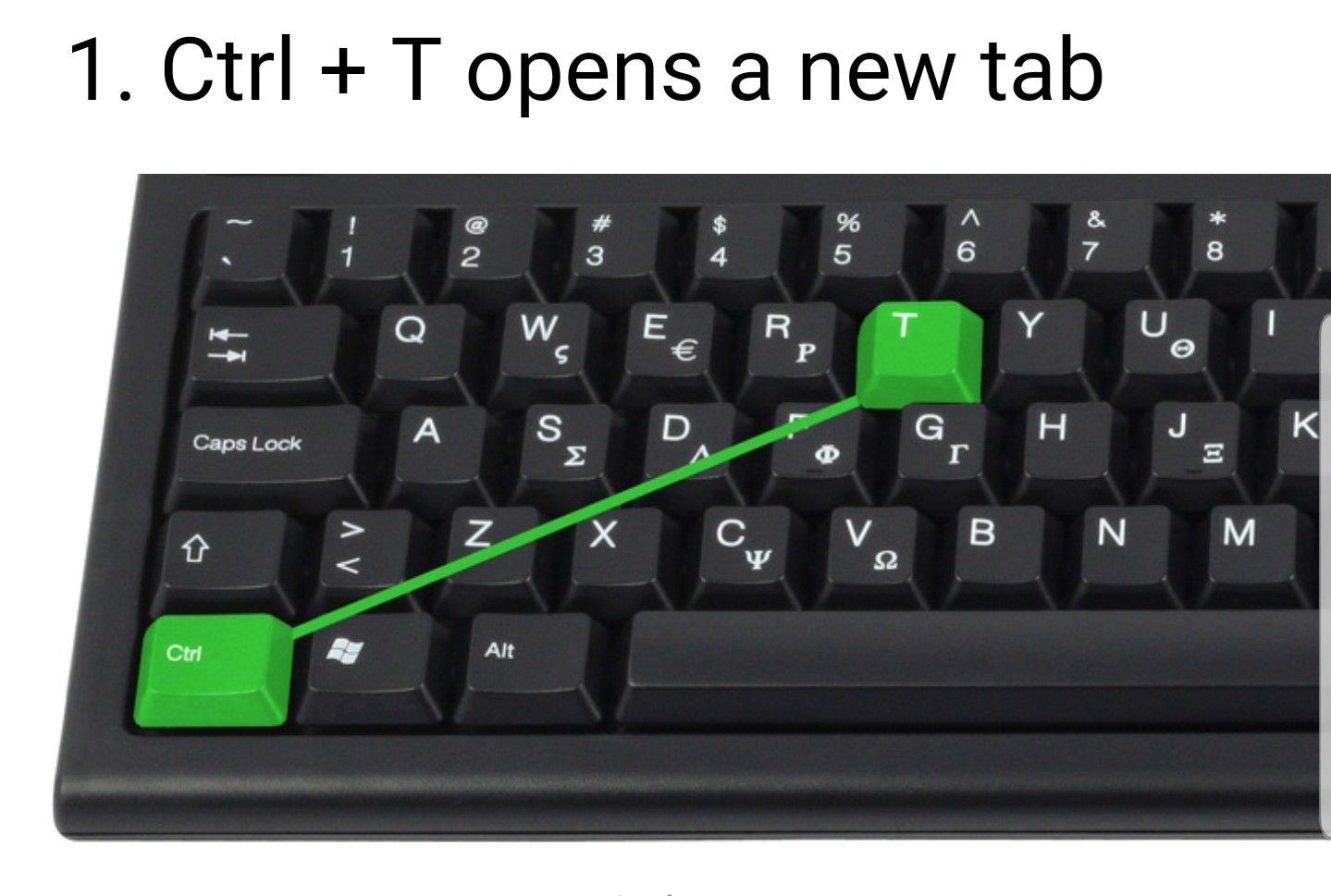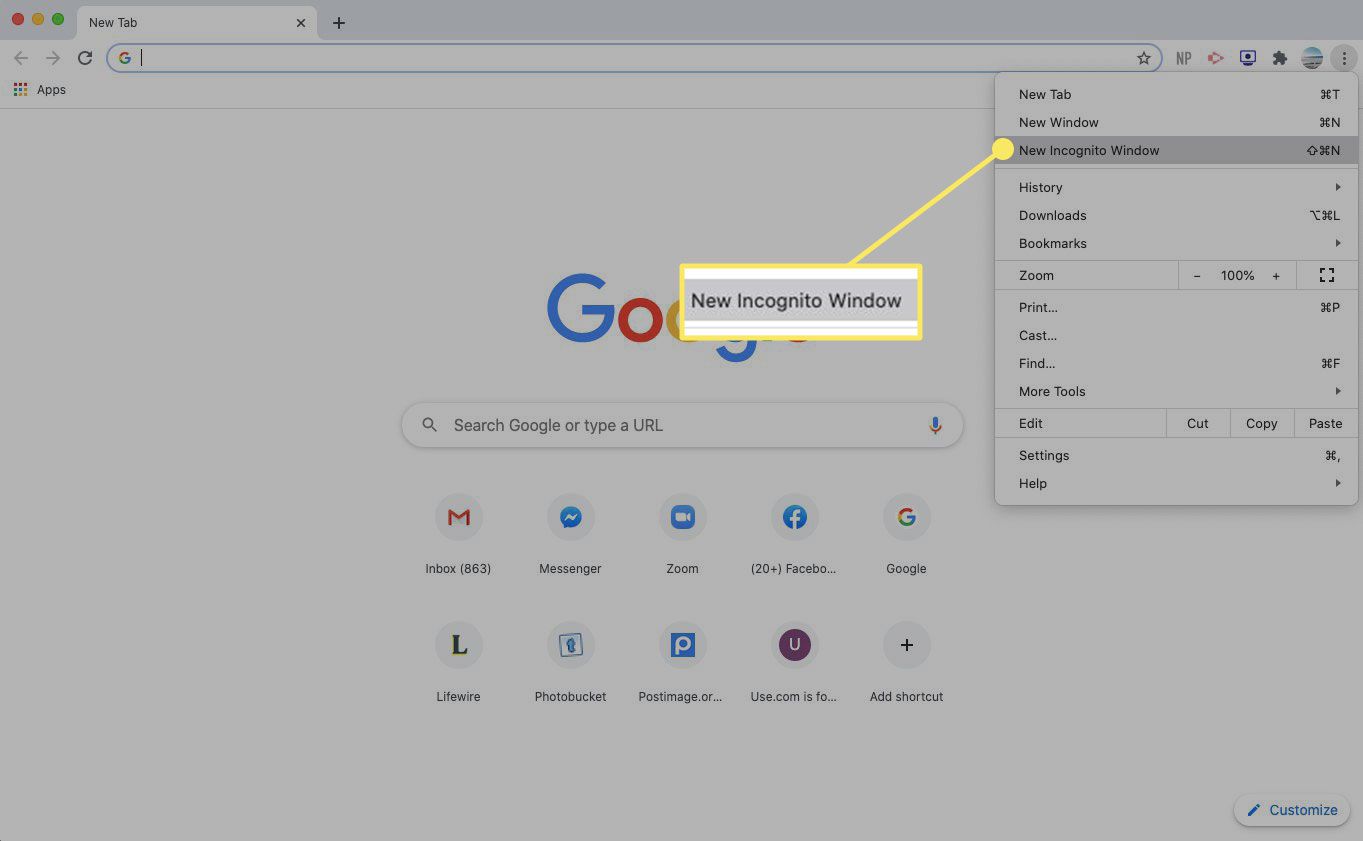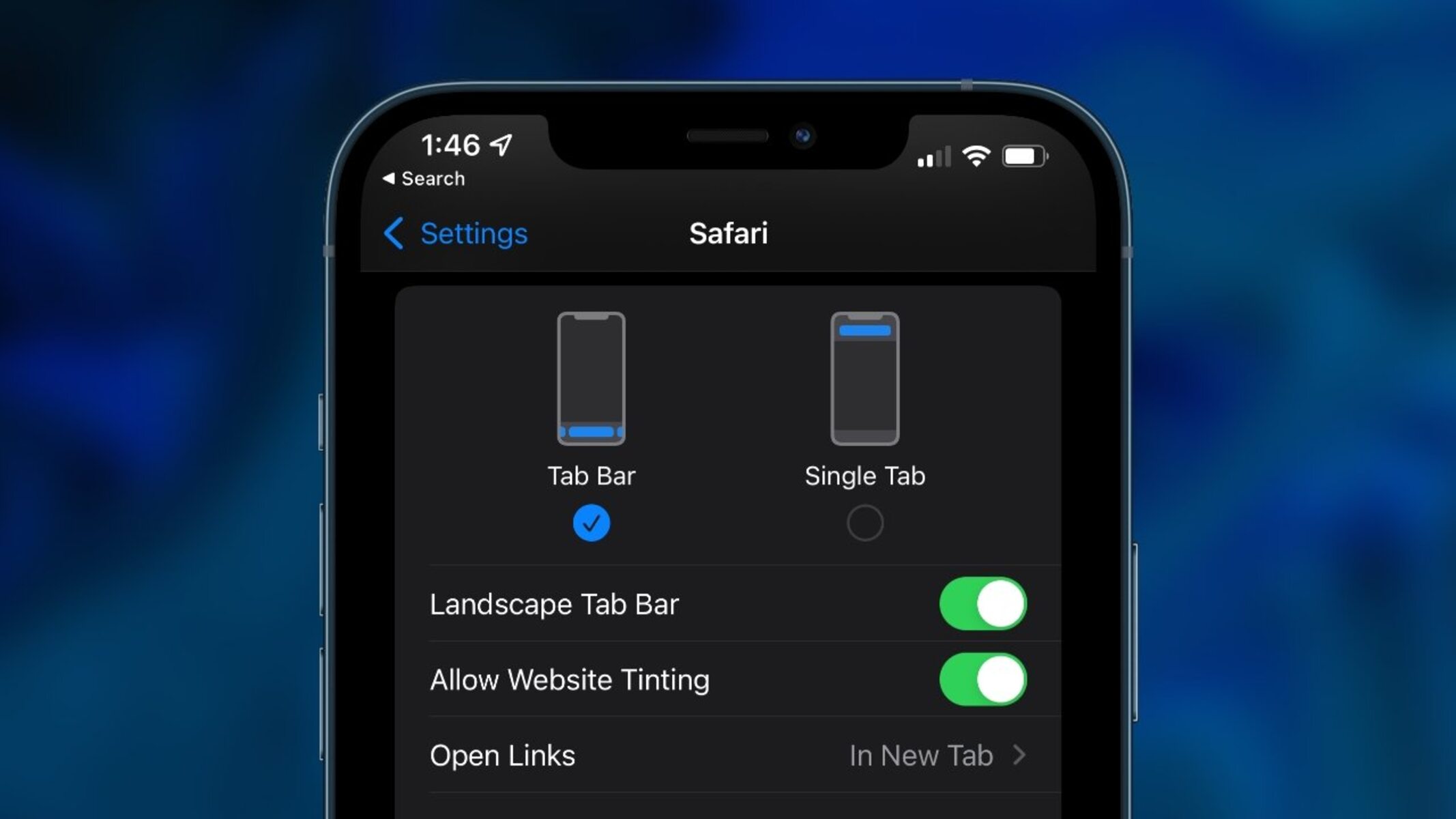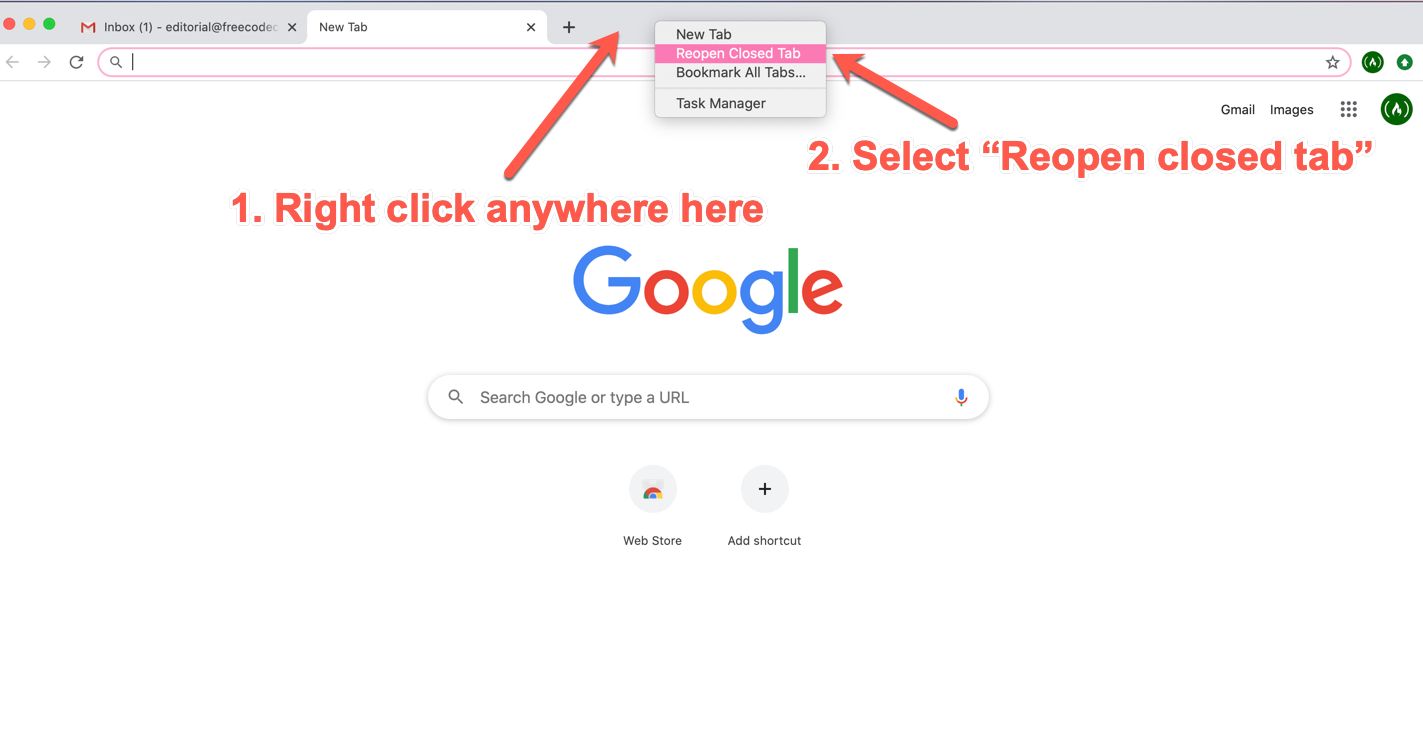Introduction
Opening a new tab with a keyboard shortcut can be a time-saving and convenient way to navigate the internet. Instead of reaching for your mouse and clicking on the new tab button, you can quickly open a new tab with just a few keystrokes. Whether you’re a tech-savvy professional, a student conducting research, or simply a frequent internet user, mastering keyboard shortcuts can significantly improve your browsing efficiency.
Many web browsers offer various keyboard shortcuts that allow users to perform tasks more efficiently, and opening a new tab is no exception. By familiarizing yourself with the keyboard shortcuts specific to your preferred browser, you can effortlessly open a new tab to access multiple websites simultaneously, without interrupting your workflow.
In this article, we will explore the benefits of using keyboard shortcuts, list common shortcuts for opening new tabs in popular browsers, provide alternative methods for different operating systems, and even introduce third-party tools that can enhance your tab management experience.
So, whether you’re looking to streamline your web browsing or wanting to discover new ways to increase your productivity, read on to learn how to open a new tab with just a few keystrokes!
Why Use Keyboard Shortcuts?
Keyboard shortcuts offer several advantages over traditional mouse-based navigation. Here’s why you should consider incorporating keyboard shortcuts into your web browsing routine:
- Increased Speed and efficiency: Using keyboard shortcuts allows you to perform tasks with minimal effort and without the need to switch between your mouse and keyboard constantly. With just a few keystrokes, you can open new tabs, switch between tabs, and perform various other actions more quickly, giving you a noticeable boost in browsing speed and efficiency.
- Improved Accessibility: Keyboard shortcuts provide a more accessible browsing experience for users with mobility impairments or those who struggle with precise mouse movements. By relying on keyboard commands, users can navigate websites, open new tabs, and perform other actions with ease, regardless of their physical limitations.
- Reduced Strain and Fatigue: Constantly using a mouse can lead to finger strain and fatigue, especially during long browsing sessions. Keyboard shortcuts offer a more ergonomic alternative by allowing you to access frequently used functions without excessive mouse movement. This can help prevent repetitive strain injuries and improve overall comfort during extended periods of web browsing.
- Enhanced Productivity: By eliminating the need to manually navigate through menus and click on buttons, keyboard shortcuts can significantly boost your productivity. You can rapidly switch between tabs, open new tabs for research purposes, and perform various other tasks effortlessly, saving valuable time and allowing you to focus on the content you are browsing.
Whether you’re a power user or a casual internet browser, incorporating keyboard shortcuts into your routine can enhance your overall browsing experience. The next section will dive deeper into the most common keyboard shortcuts used for opening new tabs in popular web browsers.
Common Keyboard Shortcuts for Opening a New Tab
Each web browser has its own set of keyboard shortcuts for opening a new tab. Below are the most commonly used shortcuts for popular browsers:
- Google Chrome:
- Windows/Linux: To open a new tab, press Ctrl + T.
- Mac: To open a new tab, press Command + T.
- Mozilla Firefox:
- Windows/Linux: To open a new tab, press Ctrl + T.
- Mac: To open a new tab, press Command + T.
- Microsoft Edge:
- Windows/Linux: To open a new tab, press Ctrl + T.
- Mac: To open a new tab, press Command + T.
- Safari:
- Mac: To open a new tab, press Command + T.
These shortcuts work in most versions of the respective browsers and provide a quick and effortless way to open a new tab. By memorizing these shortcuts, you can easily open multiple tabs without having to reach for your mouse.
Now that you know the basic shortcuts for opening a new tab, let’s explore alternative keyboard methods for different operating systems.
Shortcut Methods for Different Browsers
While the common keyboard shortcuts mentioned earlier work in most popular browsers, there are a few additional methods for opening new tabs that are specific to certain browsers. Here are some shortcut methods for different browsers:
- Google Chrome:
- To open a new tab in the background, press Ctrl + Click on a link.
- To open a link in a new tab and switch to it immediately, press Ctrl + Shift + Click on the link.
- Mozilla Firefox:
- To open a new tab in the background, press Ctrl + Click on a link.
- To open a link in a new tab and switch to it immediately, press Ctrl + Shift + Click on the link.
- Microsoft Edge:
- To open a link in a new tab and switch to it immediately, press Ctrl + Click on the link.
- Safari:
- To open a new tab in the background, press Command + Click on a link.
- To open a link in a new tab and switch to it immediately, press Command + Option + Click on the link.
These additional methods provide more flexibility when opening new tabs, allowing you to control whether the new tab opens in the background or switches to it immediately.
Now that you’re familiar with the various keyboard shortcuts for opening new tabs in different browsers, let’s explore some alternative methods for opening new tabs using third-party tools.
Opening New Tabs with Alternative Keyboard Shortcuts
Aside from the default keyboard shortcuts provided by browsers, there are alternative methods and tools that allow you to open new tabs using customizable keyboard shortcuts. These tools can provide added convenience and customization options for your browsing experience. Here are a few examples:
- Browser Extensions: Many browser extensions, such as “Shortcut Manager” or “Shortkeys,” allow you to define your own keyboard shortcuts for various browser functions, including opening new tabs. These extensions typically provide a user-friendly interface where you can assign specific keyboard combinations to open new tabs with a single keystroke.
- Operating System Shortcuts: On some operating systems, you can set up system-level shortcuts to open specific applications or websites in new tabs. For example, in Windows, you can create a desktop shortcut to your browser and assign a custom keyboard shortcut to it. This way, pressing the assigned shortcut will open a new tab in your default browser, allowing for quick access to your most frequently visited websites.
- Text Expansion Tools: Text expansion tools like “AutoHotkey” or “TextExpander” enable you to create shortcuts that automatically expand into longer snippets of text, including URLs. By setting up a specific shortcut, you can instantly open a new tab with the desired website pre-populated in the address bar.
By utilizing these alternative keyboard shortcut methods, you have the flexibility to customize your browsing experience according to your preferences and work habits. Experiment with different tools and find the one that suits your needs best.
Now that we’ve explored various keyboard shortcuts and alternative methods for opening new tabs, let’s conclude our discussion.
Using Third-Party Tools for Enhanced Tab Management
In addition to keyboard shortcuts, there are several third-party tools available that can enhance your tab management experience and provide additional features. These tools offer advanced tab organization, customization, and productivity features that can transform your browsing experience. Here are a few popular options:
- Tab Managers: Tab managers such as “OneTab” or “Session Buddy” allow you to quickly save and organize your open tabs into groups or sessions. This can help declutter your browser and improve performance, as well as enable you to easily restore saved sessions or export them for later use.
- Tab Extensions: Browser extensions like “Tab Wrangler” or “Tab Snooze” automatically manage your open tabs by suspending or closing inactive tabs, reducing memory and CPU usage. These extensions can help streamline your browsing experience and improve overall system performance.
- Tab Previews: Some extensions, such as “HoverMe” or “Tabby Cat,” provide tab previews or thumbnails when you hover over your open tabs. This can make it easier to visually identify the content of each tab and quickly switch between them.
- Tab Searchers: Tab search extensions like “Tabliss” or “Search Plus” allow you to search for and switch to specific tabs using keywords or search terms. This is particularly helpful when you have numerous tabs open and need to quickly find a specific webpage.
- Shortcut Customizers: If you prefer complete control over your keyboard shortcuts, tools like “Karabiner” or “AutoHotkey” enable you to create custom shortcuts for various actions, including opening new tabs. Customization options can range from simple key reassignments to more complex multi-key shortcuts.
By incorporating these third-party tools into your browsing routine, you can take your tab management to the next level. Experiment with different tools and find the ones that align with your preferences and browsing habits.
Now that we have explored various methods, shortcuts, and tools for opening and managing new tabs, let’s wrap up our discussion.
Conclusion
Mastering keyboard shortcuts for opening new tabs can greatly enhance your web browsing experience. By utilizing these shortcuts, you can navigate the internet with increased speed, efficiency, and accessibility. Whether you’re using common browser shortcuts or exploring alternative methods, the ability to quickly open new tabs with just a few keystrokes can save you time and streamline your workflow.
In this article, we’ve covered the importance of using keyboard shortcuts, the common shortcuts for opening new tabs in popular web browsers, alternative methods for different browsers, and the use of third-party tools for enhanced tab management. By incorporating these techniques, you can optimize your browsing experience to suit your preferences and increase your productivity.
Remember to practice and familiarize yourself with the keyboard shortcuts specific to your preferred browser. Additionally, feel free to explore the various third-party tools available to further enhance your tab management and browsing efficiency.
With a little practice and exploration, you’ll soon find yourself effortlessly opening new tabs, switching between websites, and optimizing your browsing experience. So, start implementing these keyboard shortcuts today and unlock a whole new level of productivity and convenience while navigating the vast world of the internet!

























